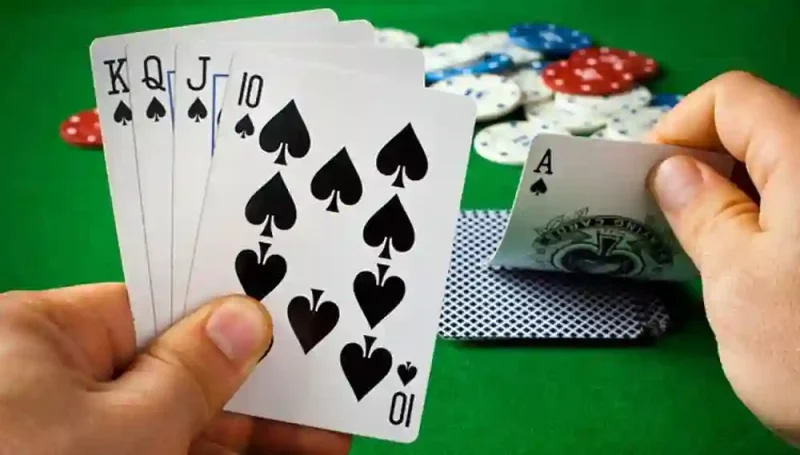Poker is a game of skill. It requires psychological savvy, emotional control, and learning from experience. It is also a game of deception. One of the most important skills in poker is hand reading. This involves observing your opponents’ actions and betting patterns to determine their likely range of hands.
Basic rules
Regardless of what poker variant you choose to play, there are a few basic rules that every player should know. These include the game’s betting rules, hand rankings, and the fact that an Ace is considered to be high in most situations.
In most poker games, players put money into a pot before they receive their cards. The amount of money that each player puts into the pot determines how much they can bet on their hands. This is known as pot-limit betting. In addition, some games require players to place blind bets. These bets are placed before the players receive their cards and encourage competition.
Once the first betting round is complete, the dealer deals three cards face up on the table. These are community cards that anyone can use to create their best five-card poker hand. Once the flop is revealed, the remaining players get another chance to raise or fold their hands.
It is important to protect your hand at all times in poker. If you think someone is trying to kill your hand, then it’s your responsibility to prevent this from happening. This could be as simple as putting your chips or other objects on top of your cards to keep them hidden from others. Occasionally, situations may arise in which players must make exceptions to the rules. While this isn’t a common occurrence, it’s still something that should be understood by all players.
Variations
From the high stakes tournaments on cable TV to the games played in homes across America, poker is a game of chance and skill. However, there are a few things that can be done to improve your odds of winning. These include observing your opponents’ tendencies, learning how to read the game, and understanding the nuances of the game.
Some variants of poker require a buy-in, which is similar to an ante but takes place before the players are dealt cards. This practice is also known as a blind bet. This type of bet can be a good way to gauge your opponent’s hand, but it should not be used as a basis for your decision-making process.
Other variations include games that allow players to exchange a number of their cards after placing their bets. This category of games includes games like Badugi, which is a fun mix of draw and lowball poker. These games are usually more difficult to master and are better suited for experienced players. In addition, they may have more complex betting intervals than regular poker games.
Betting intervals
The betting intervals in poker are a crucial factor for winning hands. These intervals are measured in increments of chips and are generally based on the number of chips that are called or raised. Generally, the higher the stakes, the shorter the betting intervals are. However, this is not always the case and many professional players use different betting intervals depending on the situation.
Some players will make change between hands in order to minimize delays while calling a raise, but this practice is usually frowned upon by casinos because it may allow players to surreptitiously rathole the money and circumvent buy-in limits. In addition, making change between hands can cause confusion, as the player might not be able to tell which player called a raise, or which player called a bet.
A good آموزش پوکر program or coach can teach you how to read your opponents’ behavior and play with confidence. In addition to helping you improve your fundamental strategy, these coaches can help you avoid common mistakes and exploit weaker players. They can also help you develop a solid mental game and overcome psychological roadblocks to your success.
If you’re looking for a complete guide to improving your tournament poker strategy, check out this course by one of the top mental game coaches in the world, Jared Tendler. This course covers everything from preflop ranges to advanced postflop strategies and stack depth considerations.
Bluffing
A well-timed bluff can be extremely profitable in poker. It can force opponents to fold their stronger hands, allowing the bluffer to win the pot. However, a poorly executed bluff can lead to a large loss of chips. This is why it’s important to avoid tilting after a bad bluff. Instead, you should learn from your mistakes and use them to improve your game.
The pitfalls of Bluffing are numerous, but they can be avoided with careful planning. It is crucial to understand your opponent’s tendencies and how they might respond to your bluffs. You should also consider the size of the pot and how it could change over the course of the hand. This will help you determine whether your bluff is likely to succeed or fail.
Another important factor to consider is your table image. If your opponents believe that you play a tight style, they might be less willing to call your bluffs. In this situation, a semi-bluff is often more effective. This is when you bet with your current hand in the hope that it will improve in the future.
Lastly, you should always remember to keep your bluffing cost in line with your value-bet to bluff ratio. This is a mathematical concept that can be easily calculated by dividing your opponent’s pot odds by your bluffing costs.

